#Manuel Almeida
Text
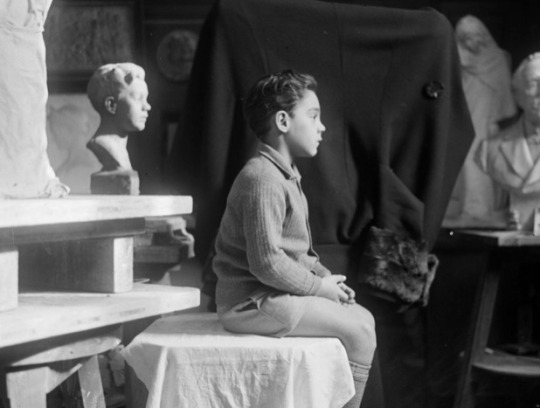
My great-grandfather Manuel Simões de Almeida posing next to a sculpture of himself done by his father José Simões de Almeida (Sobrinho), Portugal, 1920s.
#mygirlhatesmyheroin#personal#black and white photography#1920s#20s#roaring twenties#manuel simoes de almeida#jose simoes de almeida#jose simoes de almeida (sobrinho)#sculpture#art#artists studio#portuguese art#1920s art#20s art#artwork#sculptor#antique#vintage
37 notes
·
View notes
Text


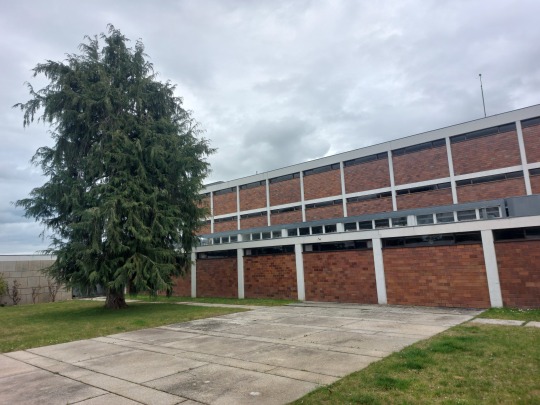
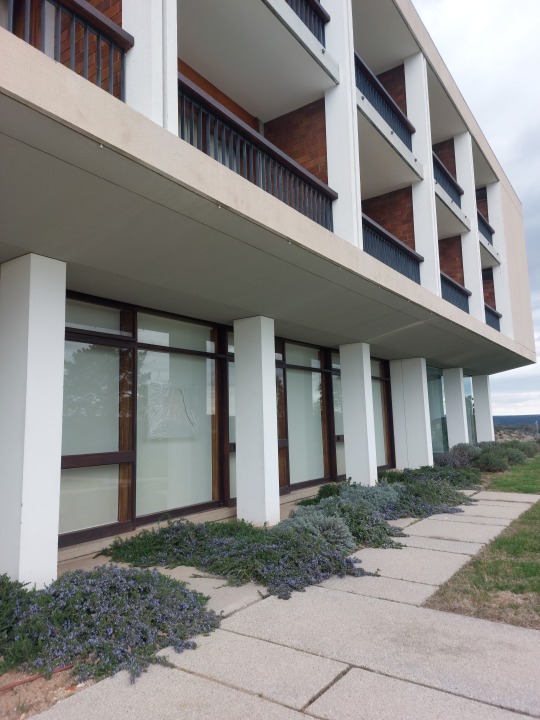

Pousada de Picote, Miranda do Douro. João Archer de Carvalho, Manuel Nunes de Almeida, 1954-1957
#Trás-os-Montes#portugal#picote#barrocal do Douro#miranda do douro#arch tekton#joão Archer de Carvalho#manuel nunes de almeida#1950s
2 notes
·
View notes
Text
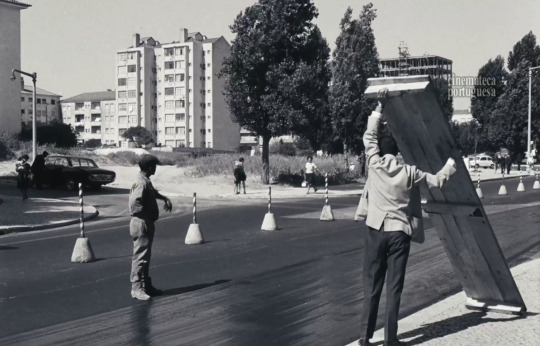
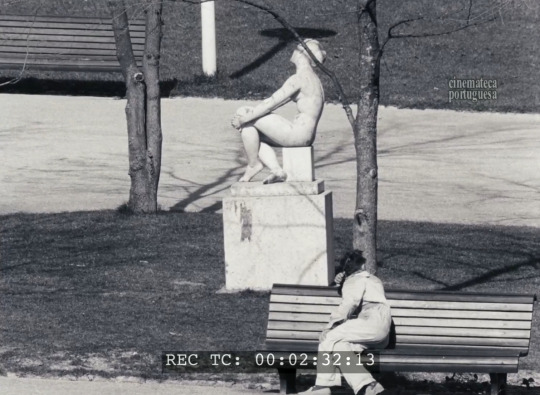

Manuel Faria de Almeida, Para um Album de Lisboa, 1966 http://www.cinemateca.pt/Cinemateca-Digital/Ficha.aspx?obraid=2744&type=Video
1 note
·
View note
Text
O Ministério Público e a corrupção
O Ministério Público (MP) representa o Estado, defende os interesses que a lei determinar, participa na execução da política criminal definida pelos órgãos de soberania, exerce a ação penal orientado pelo princípio da legalidade e defende a legalidade democrática, nos termos da Constituição, do respetivo Estatuto e da Lei. Por outro lado, o MP goza de autonomia em relação aos demais órgãos do…

View On WordPress
#corrupção#Diretiva n.º 1/2023#Lei de Política Criminal#Manuel Soares#Ministério Público#Polícia Judiciária#princípio da legalidade#Teresa Almeida
0 notes
Text
VOX despliega una lona de grandes dimensiones en el centro de Madrid donde identifica la Agenda del consenso progre
VOX ha desplegado en el centro de Madrid, concretamente en el cruce de la calle Alcalá con la calle O’donnell, una lona de gran longitud donde se denuncia la Agenda 2030, a la que se han adherido todos los partidos, salvo VOX, y sus sindicatos de clase, salvo Solidaridad.
En la imagen se puede ver al presidente del Gobierno, Pedro Sánchez, junto a su vicepresidente Yolanda Díaz en un acto de…

View On WordPress
#Agenda 2030#Agenda del consenso progre#Comunidad de Madrid#Día del Trabajador#Defensa de los Trabajadores#Isabel Días-Ayuso#José Luis Martínez-Almeida#José Manuel García-Margallo#Pedro Sánchez#políticas más radicales del ecologismo#Solidaridad#Yolanda Díaz
0 notes
Text
Exposición “Réquiem”, Colectiva
Exposición Réquiem
Colectiva
12.01.2023
Arco de Belén
Es la pérdida, en su sentido más general, lo que viene a unir en esta muestra las piezas de 17 artistas de las más disímiles manifestaciones y discursos artísticos. Sus curadoras reconocen que ellos, como el resto de los mortales, han pasado en algún momento de la vida por ese proceso de duelo, ya sea por pérdidas relacionales,…

View On WordPress
#2023#Agustín Hernández Carlos#Andy Mendoza#Antonio Gómez Margolles#Arco de Belén#Carlos Almeida#Chino Arcos#Claudio Sotolongo#Humberto Monteagudo#José Manuel Mesías#Levi Orta#Lisandra Isabel García#Marirosa Beltrán#Muestra Colectiva#Ossain Raggi#Reinier Nande#René "Pupy" Peña#Ricardo Miguel Hernández#Sergio Marrero#Tomás Lara Franquis
0 notes
Photo

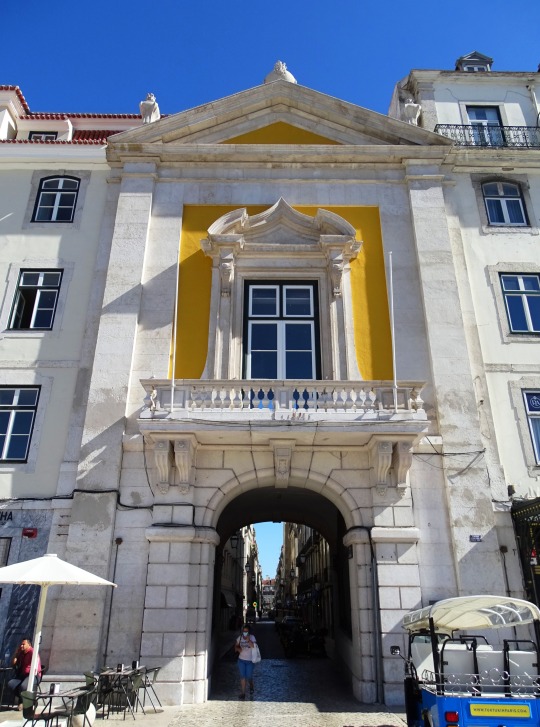
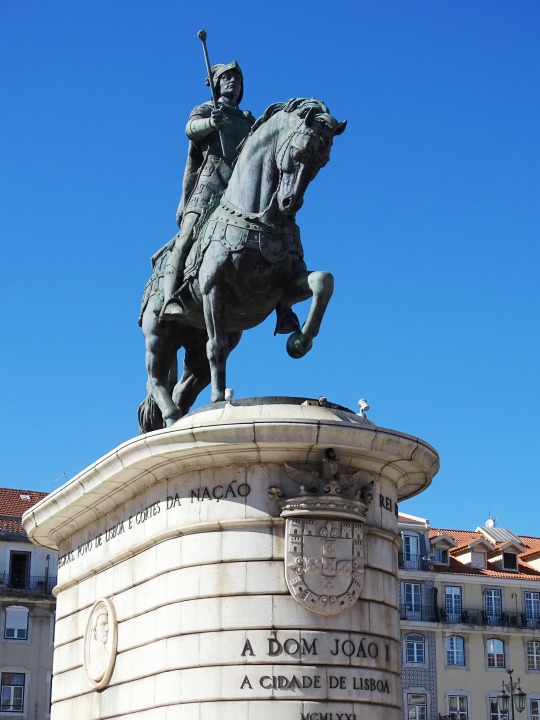
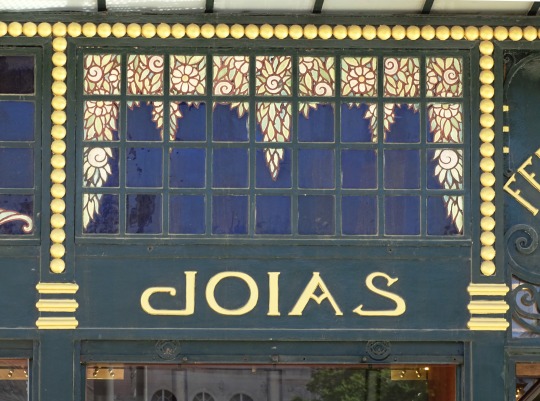





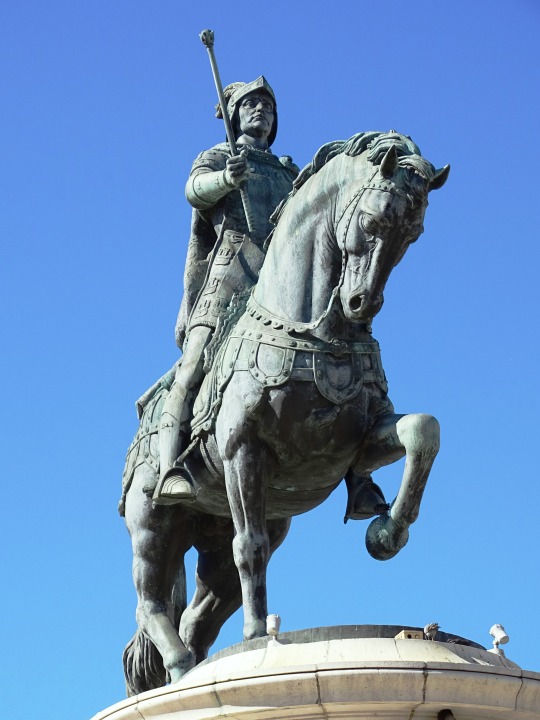
Rossio/Praca da Figueira, Lisbon (No. 5)
The Rossio has been a meeting place for people of Lisbon for centuries. Some of the cafés and shops of the square date from the 18th century, like the Café Nicola, where poet Manuel Maria Barbosa du Bocage used to meet friends. Other traditional shops include the Pastelaria Suíça (1922–2018) and the Ginjinha, where the typical Lisbon spirit (Ginjinha) can be tasted. The building of the Maria II Theatre and the Public Gardens to the north of the square only made the area more attended by Lisbon high society in the 19th century. Nowadays it is constantly populated by Lisboners and tourists.
Source: Wikipedia
The Praça da Figueira (Square of the Fig Tree) is a large square in the centre of Lisbon, in Portugal. It is part of the Lisbon Baixa, the area of the city reurbanised after the 1755 Lisbon earthquake.
In the 16th century the square did not exist, and most of its area was occupied by the Hospital Real de Todos os Santos (All-Saints Royal Hospital), the most important in the city. In 1755, after the great earthquake which destroyed most of Lisbon, the hospital was greatly damaged. It was demolished around 1775.
The large area previously occupied by the hospital in the Baixa was turned into an open market square. Around 1885, a large covered market of 8,000 m² was built. This market existed until 1949, when it was demolished. Since then the square has been an open space.
In 1971 a bronze equestrian statue representing King John I (1357–1433), by sculptor Leopoldo de Almeida, was inaugurated in the square. The monument also carries medallions with the effigies of Nuno Álvares Pereira and João das Regras, two key characters in the 1385 Revolution that brought John I to power.
In 1999/2000, during the last renovation of the square, the statue was relocated from the middle to a corner of the square, in order to make it visible from the Praça do Comércio. The original renovation project also called for the buildings to be completely covered with ceramic tiles (azulejos) by Daciano Costa, which has not been done.
The Praça da Figueira has a very uniform profile, with four-storey buildings dating from the rebuilding of the Baixa Pombalina. The buildings are occupied by hotels, cafés, and several shops. It is also an important traffic hub, with bus and metro stops.
Source: Wikipedia
#Arco do Bandeira by Manuel Reinaldo dos Santos#Praca da Figueira#travel#King Pedro IV Square#Praça de D. Pedro IV#King John I by Leopoldo de Almeida#architecture#cityscape#Lisboa#Lisbon#Portugal#original photography#summer 2021#tourist attraction#landmark#São Jorge Castle#Pombaline Downtown#Southern Europe#sculpture
1 note
·
View note
Text
Olá brasileiros e falantes de português do mundo todo! Informando a quem desejar saber que agora temos a nossa própria newsletter nacional pra quem gostou de Dracula Daily e queria algo parecido com literatura brasileira. Isso mesmo, agora você pode se inscrever aqui pra receber a versão século XXI de um folhetim do século XIX contando as “Memórias de um sargento de milícias”. Todos os sábados recebendo um capítulo da vida de Leonardo, o primeiro malandro carioca da literatura brasileira, e vendo ele crescer e fazer suas malandragens no Rio de Janeiro do século XIX. Aproveitem =)
#portuguese#português#memórias de um sargento de milícias#manuel antônio de almeida#folhetim virtual#brazilian literature#literatura brasileira#romantismo#newsletter
1 note
·
View note
Text




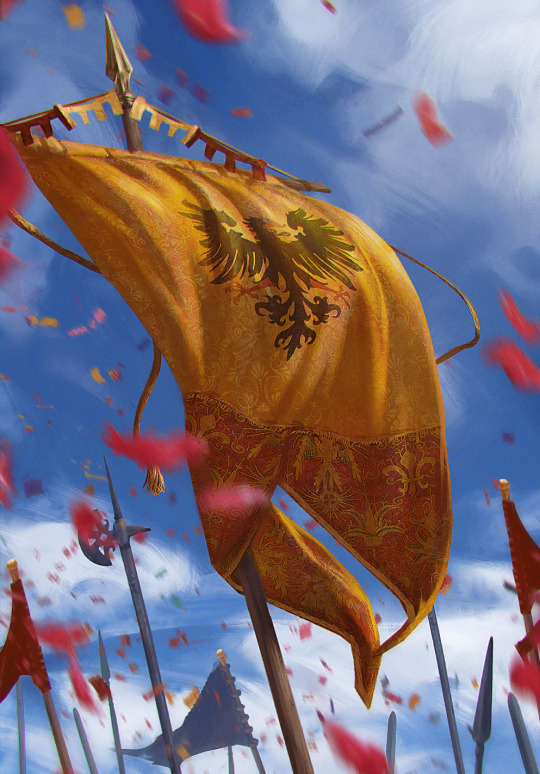




Gwent: The Witcher Card Game | The cards that could've been 3/?
Mastercrafted Spear (Lorenzo Mastroianni), ?? (??), Rivian Broadsword (Lorenzo Mastroianni)
Bloody Flail, Lyrian Banner (Bogna Gawrońska), Angreni Sword (Diego de Almeida)
War Hammer (Manuel Castañón), Ornamental Sword, Sihil (Anna Podedworna)
131 notes
·
View notes
Text
AU MASTERPOST
Since I'm finally posting more content about my AUs, I figured I may as well make a little masterpost of what characters are in it and what they're all about!
Information under the cut because this is a lot longer than expected! Also, both AUs will be written in different colors for ease of finding the information on each of them.
MEMENTO MORI!
Animatronic names
Glamrock Freddy - Glam
Glamrock Bonnie - Gloss
Glamrock Chica - Gala
Roxanne Wolf
Montgomery Gator
Moondrop - Luna
Sunnydrop - Sol
(Possible) Eclipse - Chroma
OC - Melody
Major human characters
Gregory Stand-In - Vivianne Whitaker
Vanny - Ivanna Harland, Vanna
Vanessa - Vanessa Coella, Anne
Side characters
Vivianne's younger sister - Olive Whitaker
Marketing - Luis Cabrera
Daycare assistant - Jenna Rusk
Roxanne's designer, makeup artist and hair stylist - Manuel Almeida
Sol and Luna's creator and general engineer and technician - Drew Vesper
Melody's creator and cabinet technician - Liv Rivera
Missing kid - Renata Gonzáles
Missing kid - Elliot Gonzáles
Missing kid - Cassie Arison
Higher-up - Beatrice Dara
Higher-up - Robert Buckingham
CEO - Dominic Arison
Symbolic characters
PRINCESS QUEST
Princess (later Queen) Ivie, Harewolf, The Corpse - Vanna
Princess (later King) Nessie, Lighthouse, The Exiled - Anne
The Duke - Glam
The Guildmaster (?) - Gloss
The Baker - Gala
The Baroness - Roxanne
The Knight - Montgomery
The Magician - Luna
The Jester - Sol
The Librarian - Melody
LET'S PLAY WITH ECLIPSE (BALLOON WORLD)
"Eclipse", Umbra - Vanna?
Eclipse, Saros - Luna?
Lullaby - Melody
More characters may come...
WHAT IS MEMENTO MORI ABOUT?
Memento Mori goes into themes of neurodivergency, loneliness, and the intersection between them as a major thing and arguably the most important underlying plot line underneath your typical FNAF SB plot. At the very least it's important to me.
It takes place in the year 2031, with the PizzaPlex having opened in 2025, two years after a canon-divergent FFPS. It's connected to my currently very under construction humanized FNAF1-FFPS AU, All Those Nights.
It starts off when Vanna, a woman who is tired of being nobody and determined to be remembered, sets her sights on the PizzaPlex to try and cause some loud, flashy tragedy that will make her stick in people's memory. With the help of her girlfriend, Anne, who she's known since she was a child and reunited with as an adult, since Vanna faked her death in her teenage years. Anne has a hatred for people and a disillusionment with the world around her, but also holds a sense of morality she tries to bury.
Vanna could have had some morals, but thanks to her past with street violence, she is very desensitized to her own horrible actions and much more ready to go through with this. She has a playful, friendly demeanor that hides horrendous anger issues caused by emotional dysregulation, buried self-hatred, and a sort of spite towards a world where she never fit in.
So, the PizzaPlex.
Through the course of six months, Vanna and Anne hack the Glamrocks one by one, and kill several people to try and fulfill Vanna's goal.
The events of FNAF SB proper follow primarily Glam as the protagonist, with Vivianne as a sort of second POV, as they try to survive, figure out what's happening, and save everyone, while also trying to find Vivianne's sister, who got stuck here with her.
There's also some side plots! Such as...
-Gala, Monty and Roxy slowly coming to realize that what's going on here isn't what they're being led to believe, only to be fully stripped of their free will to ensure they stay in line, something that happened to Melody a while before the events of the plot.
-Sol's initial attempts to get back to safety when they know everything's dangerous, from which they shift focus upon running into Melody, realizing something's wrong, and trying to find a way to help him.
-Luna being a looming presence through most of these plot lines, being just... different. In reality, it's Vanna keeping things in check, while Luna's stuck in the back of his own body, spectating.
-And Vanna and Anne's attempts to get everything back on track as Vanna starts to lose her temper and speed towards her own doom.
There's some doodle comics about Memento Mori floating around my blog, I may link those later.
SECURITY IS IN PLACE!
Animatronic names
Glamrock Freddy - Astrifer
Glamrock Bonnie - Noctifer
Montgomery Gator - Stellifer
Glamrock Chica - Sally
Roxanne Wolf - Rox
Moondrop - Tsuki
Sunnydrop - Taiyo
Major human characters
Protagonist - Bernadette Murray, Berry, Dettie
Vanessa - Vanessa Monroe, Nessa
Vanny - Valentine Lovett, Heartache
Side characters
CEO - Steve Raglan, previously Sammy Emily
Higher-up - John Burrows
Edwin Murray - Edwin Murray
Gregory - Gregory Ledger
Cassie - Cassie Burrows, possibly
More human characters may be borrowed from Memento Mori or concepted up
WHAT IS SECURITY IS IN PLACE ABOUT?
So this AU started as a "yes, and..." bit with a mutual about a FNAF SB dating sim. It's not actually super romance focused but I'm telling you this because the way the story is set up and stuff like the theming surrounding this AU's Vanny makes more sense in that context.
So, the year is 2005, owing to the timeskip between FNAF1 and FNAF3 being cut some.
The PizzaPlex, opened in 2003, has moved on from the horrors of the past. Or most people think that, anyways. Raglan, a king of coping healthily with grief, pulled a small funny move, and designed nearly all the Glamrocks after people from the past.
Astrifer is designed after Henry Emily.
Noctifer is designed after William Afton.
Taiyo and Tsuki are designed after the Puppet, and, in turn, Charlie Emily.
Sally is designed after Susie Beck.
Rox is designed after the Mangle.
Stellifer is exempt from this and an outlier in that. He probably was just bought from a different location and redesigned a bit.
Most people don't notice, or don't care enough to think too hard about it.
Valentine Lovett, the now adult younger sister of Susie Beck, isn't most people.
Valentine is a very sweet and cheerful woman who keeps up such a sickeningly pretty, lovely appearance. In actuality, she is a very disturbed individual whose life was ruined by her sister's death, as her parents couldn't cope with it and traumatized her even further by projecting Susie on her.
Valentine is someone incredibly obsessive and who struggles to come to terms with reality, and she sees the Glamrocks as a revival of people who should have stayed dead. So she's decided she's gonna be the one to make them truly gone. She's also a terrifyingly skilled stalker.
The story is divided into several "routes", with highly differing story lines. However, each character has their route jointed with another, and while the character you pick will mostly be the focus, the events will follow a roughly similar progression for both of those characters.
So, routes:
NIGHT GUARD: Astrifer - Nessa (Hacked: Noctifer, Tsuki)
STAGE CREW: Noctifer - Stellifer (Hacked: The opposite of who you pick. If you pick Noctifer, Stellifer will get hacked, and viceversa)
KITCHEN: Sally - Rox (Hacked: Rox)
DAYCARE: Tsuki - Taiyo (Hacked: Tsuki)
HEARTBREAKER: Valentine (Hacked: Noctifer, Tsuki, Rox, Stellifer, Sally)
ABOUT THE HEARTBREAKER ROUTE...
It is possible to choose Valentine within the story of SiiP. A sort of New Game+ possibility where Bernadette has the chance to meet Valentine early and bond with her first.
This isn't an "I can fix her" story path, however, it's a "She will make you worse" one.
Bernadette is someone who would very much do anything for a person they care about. At the beginning here, when they heard of Valentine's motivations, they thought she had a bit of a point.
So, they decided to help her.
I typically dub this story path's Bernadette either Darling or Heartbreaker, and the story follows their plunge into a full-on corruption arc that lands them as a true, full villain by the end of it, perhaps to an even greater degree than Valentine.
They carefully work their way into ensuring they don't get attached to anyone other than Valentine, manipulate the characters they normally would have bonded with and make them believe they're their friend, ready, at any time needed, to betray each and every one of them for their own gain.
Darling started out not as certain of this, but slowly came to realize they enjoy the thrill of being in control, and started to become a cruel, malicious and silver-tongued person. They still love Valentine deeply, but it's hard for them to truly extend that care to anyone else.
They become the closest SiiP has to a Mimic variant, and this story path leads to SiiP's own version of Security Breach within lore, which would be a lot more focused on mind games and the fear of not knowing who or what you can trust.
There's a Ruin DLC side AU spanning off of it too, but that's in the works.
Check out 1 2 3 for some in-universe information on Heartbreaker FNAF SB!
If you got this far, thanks for reading!
34 notes
·
View notes
Text

Leopoldo de Almeida (foto Manuel de San Payo)
13 notes
·
View notes
Text
Reading list 2023
Crossposted from pillowfort.
Happy New Year! I read fewer books than usual this year, and didn't enjoy a lot of them. Hopefully next year brings happier reading. The books I liked the best were Dead Souls by Nicolai Gogol, which was a fascinating satire and Lovecraft Country by Matt Ruff, which was just so much fun from start to finish.
At the other end of the scale The Passenger by Cormac McCarthy was probably the most disappointing, given how well it started and how much I had been looking forward to reading it. It's a bit sad his final works are so dull and unfocused. I still intend to read more of his earlier works sometime. Demon Copperhead by Barbara Kingsolver actually made me kind of angry on Dickens's behalf. Whatever you think of the man, he prioritised his readers' enjoyment, and that's how he reached people and managed to effect real social change. Demon Copperhead was a grim slog.
Full list behind cut.
Orientalism – Edward Said
The Dark is Rising – Susan Cooper
Shirley – Charlotte Bronte
Robertson Crusoe – Daniel Defoe
Sons and Lovers – D H Lawrence
Spring Snow – Yukio Mishima
Demon Copperhead – Barbara Kingsolver
Silverview – John le Carre
The Passenger – Cormac McCarthy
The Martian Chronicles – Ray Bradbury
The Bounty Hunters – Elmore Leonard
The Seven Moons of Maali Almeida - Shehan Karunatilaka
The Dangers of Smoking in Bed - Mariana Enríquez
Whale – Cheon Myeong-kwan
Dead Souls – Nikolai Gogol
The Fifth Season – N. K. Jemisin
This is How You Lose the Time War - Amal El-Mohtar and Max Gladstone
Southern Seas – Manuel Vaquez Montalban
Song of Achilles - Madeline Miller
The Man Who Spoke Snakish – Andrus Kivirahk
Lovecraft Country – Matt Ruff
Foe – J M Coetzee
All That I Am – Anna Funder
Women in Love – D H Lawrence
Piercing – Ryu Murakami
4 notes
·
View notes
Note
Oh, that Jeronimos gossip sounds interesting. What do you mean, it was a scandal?
In the 19th century, everyone in Europe was traversing an identity crisis and sought to define their own nationalism. So nations in europe looked back at their past and tried to think, which moment of the past signified our biggest glory? The answer to this question is whatever revival you see in the country's capital city. Paris with Gothic. England with Tudor. Greece is easy to answer. Italy, take a guess.
Well we realised, it has to be Manuel I, because that's when we were an EmPiRe. Glorious constructions! Colonialism! Imperialism!
More so, at this moment, and this when the subject of Art History is being developed into a field of studies and not just an "I have opinions" type of thing, people figured it was at this moment that Portugal, because it had so much money, developed its own style. A style uniquely portuguese, an architectural language that willingly (willingly!) rejected the renaissance, which could only mean we were SO POWERFUL. A style that is comprised of all these new ExOtIc things we were discovering across the globe, and which apparently celebrates the discoveries because wow look at all these ropes on these windows!
On a side note: now that we're in 2023, that is 90% false. Most art historians disagree that Manuelino is an architectural style at all. The "ropes" are not ropes and never were. There is some "exoticism" in the buildings, yes, but they're not there because "haha white man never seen an elephant before". They're actually symbols of power and they're documents of events that happened in history. Fun stuff, but as usual, the romantics were wrong.
So with this settled among the portuguese people, everyone decided we must find the most glorious example of this architecture! And hey! We have it! It's the Jeronimos Monastery! The greatest gem of Manuelino!
Just one problem.
In the 19th century, the monastery was in ruins.
In 1833, religious orders were annhiliated off the face of this country, for several reasons that to this day bother the shit out of historians, but the fact of the matter is that we have a fuckton of them, way to fucking many, and they're been hoarding shit like fucking dragons. To give you an idea, there was so much shit (and I mean art, jewellery, paintings, sculpture, etc) that entire wings of the National Museum of Ancient Art were FILLED with just the crap found inside these convents.
The Jeronimos Monastery was one of the many shut down, the monks then had to go elsewhere (which is when they sold the recipe for the custard tarts of Belém to the store that is still today, and why it is still a secret). Soon after, the Monastery became home to Casa Pia, which is kind of like an orphanage for the non-portuguese people.
When this debate was happening, the monastery was in near-ruins. I mean, completely run down. So it was a huge shame at the time.
Now, mind you, this is the kind of debate that the average Zé doesn't give a shit about, and at the time, the government wasn't really concerned about this.
Enter Alexandre Herculano, and Almeida Garrett got his hand in this too. The historian decided to raise a campaign to call everyone's attention to the sorry state the monastery was in, and how shameful it was for us, the portuguese, to leave such a building to be in such a state.
It was also around this time that the word "manuelino" was coined. Vernhagen comes up with the term, but it's Almeida Garrett (WHO WAS ENGLISH, I HAVE TO KEEP REMINDING EVERYONE HE WAS ENGLISH) defined the style.
Herculano's campaign worked, and the government decided to find a project to recover the monastery.
This is when the scandals starts.
I don't know from memory, but we're looking at something like 6 different architects who were rejected. Now, this is the 19th century, a time when the concepts of "restoration" and "conservation" are being discussed. For a quiuck rundown on the two: in western europe, there's Conservation, led by John Ruskin, who defends that buildings should have no intervention, but instead, we should do our best to preserve them and then let nature run its course, until collapses. And then there's Viollet-le-Duc, in France, who defends Restoration: that we absolutely must intervene in buildings, and we are free to rebuild parts of it and make additions, even if they are 500 years away, but to do so, we must use modern materials such as iron or steel, so that the untrained eye can immediately see that this is different, and thus this must be recent. In Portugal, we mostly follow Viollet-le-Duc's perspective.
So, with Viollet-led-Duc being the favoured theorist here, when we talk about "restoring" the monastery, we're talking about heavy intervention. But this was still fresh, so the enlightened individuals at the time took this to mean "let's just make shit up".
The entire souther wing of the monastery, what is today the archeological and naval museums, was made up. Admittedly, it was rebuilt based on what it used to look like, but... much more. Compare it with this painting from, I believe the 17th century:

There's something really funny here, which is: the monastery was in a shit state because of neglect. The 1755 earthquake actually, and miraculously, barely affected Belém.
You see that tower there? That is the original belltower. It's simple, because that's the dominating style at the time, and what the original architects went for. Today there's this thing

this was designed by an architect who, and I am sighing as I type this, came up with this shit, "an indian-style dome", to honour Vasco da Gama's achievements and our presence in India. It's no wonder this shit was Salazar's wet dream.
Eventually, they just keep adding shit. The entire southern body, as I stated, is one of them, which used to be the dormitories. When you look at what the monastery looks like today and compare it with the 17th century painting, you'll notice that the 19th century version is "a lot more". There's just a lot more shit going on. They basically waged on verticality, and added and added shit to make the monumento not only more vertical, but more symmetrical, which is NOT what was going on with the monastery before this.
If you look at that painting, you'll notice that there's something there that is not in the monastery anymore. Where today is the main entrance, kind of like a closed atrium that leads you not only to the monastery proper but the façade of the church (the western portal), in the painting, it has a massive body built on top of it. That body is gone, instead there's an open space, that ugly ass dome, and two spires opposite from it--both a 19th century invention. That "body" was meant to be one of two things: a sort of customs for every commercial ship coming from india, or a connection to a Palace Manuel I might have wanted to build here (this second one seems most likely to me). They tore the whole fucking down.
Then comes the graver thing.
So, by 1880, 12 projects had been submitted, each one of them is fighting for dear life to reconstruct this shit. At one point, this became a political matter. There's a lot of background to why this became such a heated debate: the britsh ultimatum, for example, really depressed the people enough that it was the perfect event to speak of Portugal's clonial past with nostalgic tears, and then there was this massive mound of stone that was falling apart that was supposed to signify this lost glory. Restoring the monastery meant restoring PORTUGAL'S PAST!
In this wild fever of "making shit up" and, as one intellectual of the time called it, I sincerely don't remember who but I can still hear my professor quoting this in class, "make Manuelino more than Manuelino truly is", then comes, I think he was an italian architect, and he has a GREAT idea.
Let's build a fucking tower.
Now, this tower was supposed to go in the middle of the southern body, standing where today is the main entrance to the Archeological Museum.
Let's look at this again
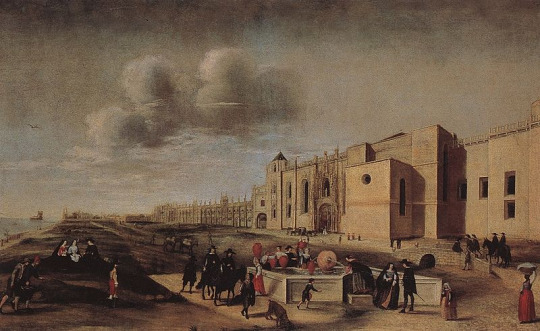
As you can see, no tower.
(Slight edit: there is a tower, but it's barely tower, it's so tiny I didn't even consider it a tower lmfao this thingw as really not bothered about VERTICALITY)
Like, I cannot highlight enough how 90% of what you see here today is just entirely made up, a completely made-up version of Manuelino that is NOT what we know Manuelino to be today, and a reflection of 19th century nationalism (which, to be fair, is different from Salzar's nationalism, though in a way that a rightist grandpa is different from his rightist grandson). But the tower was the epitome of this, and when shit got so wild they FINALLY stepped back and said "maybe we took it too far".
This italian guy goes ahead and just starts building the tower. I dont' remember the exact height, but this tower was HIGH. So high, immediately people who knew their shit told this guy it couldn't hold, because the building was from THE FUCKING 16TH CENTURY and didn't have the tructure to hold so much vertical weight. My man gave no shits. This is about when the myth of gothic being "high constructions cause people were trying to reach god" comes along, so they kinda thought this was the proper way to honour Manuelino and make it, as the mysterious dude said, more manuelino than manuelino truly is.
Here is an engraving of HALF of what it was supposed to look like, made during construction:

In 1878 construction starts. In December, the entire thing collapses, killing 10 workers.
This is exactly where this very famous photo comes from

This is what the Monastery looked like after it was botched and botched repeatedly. It started off as the gem of manuelino, and ended as the duchess of Alba of monuments, essentially.
This was so scandalous, EVERYONE wrote about it. Not only had further damage been caused to the monastery, it had caused the deaths of 10 workers. Those who had been trying to warn everyone to maybe don't overdo it, finally had their time to shine.
My absolutely favourite criticism comes from Ramalho Oritgão, who said about this new tower: "It couldn't fall from old age, so it fell from shame."
They had to abandon every project from this moment on. Reconstruction of this part of the moment would resume quickly, but they abandoned the idea of a tower altogether. But the entire campaign would only come to a complete end in 1940, by when this entire area of Belém became a fascist's wet dream to welcome the Portuguese World Exhibition. By then, however, MOST construction was concluded, and it was just soom rooms that were wrapped up.
The most interesting thing about this is that one of the people who witnessed this collapse was an englishman who would go on back home and, inspired by this event, build his own church, his own massive tower, and then do it disproportionately so it would collapse, all because he was so fascinated by this event. I keep forgetting who this was and what church we're talking about. I keep getting Fonthill Abbey but I'm not sure if that's it. And the reason he did that does have to fo with Ruskin's conservationism theories, where, if you're going to preserve things until the end, then you're going to love ruins (which is why so many british gardens have these small made-up ruins to discover), so this guy really wanted to build a church that would look like a ruin, couldn't come up with it, came to Portugal, witnessed this shit, and... voilà.
23 notes
·
View notes
Text
100 Conferences
Belém Lima
Luisa Penha
Rui Neto
Bartolomeu costa Cabral
João Paulo rapagão
Cristina Guedes
Carlos Castanheira
Jean Pierre Porcher
Troy Howie
João Pedro Serôdio
Gil PitA Penumbra
Carlos Lobo
João Mendes Ribeiro
MVCC
Alexandre Alves Costa
Francisco Providência
Zalraa zawcwi
Nuno Senos
Arquitectos anónimos
Eduardo Aires
Andre Tavares
Go Hasegawa
Jean phillipe Vassal
Manuel Graça Dias
ESM
Nadia Tolonikva
Sou Fujimoto
Frances Kéré
Maurizio Lanzarato
Santiago Cirugeda
Eva Franch
Ali cherri
Pankay Mishra
Hans Ulrich Obrist
Kazuo Sejima
Guido Beltrami
Josep Quetglas
Inês Lobo
Nuno Brandão Costa
Made in
Nieto Sobrejano
Dominique Perrault
ESM
Camilo Rebelo
Tony Fretton
Roger Diener
Go hasengawa + Office KGDVS
SAMI
Pascal Flammmer
De Vylder
Arq. G
Barbas lopes
Nuno Brandão Costa
Norland
E2A
Arno Brandhuber
Valerio Olgiati
Pascal Flammmer
Norland
E2A
Arno Brandhuber
Valerio Olgiati
Humberto Napolitano
Rui Furtado + Ricardo Bak Gordon
Job Floris
Charllote Von Moos
Stephen Taylor
Barão Hunter + Girão Lima
Madelon Von Vriesendrop
Alvaro Siza
Francesca Torzo
Manuel Mendes
Madelon Von Vriensendrop
Richard Wentworth
Thomas Thaites
Assemble
Benjamin Seroussi
Iris Rogoff
Olivier Marboeuf
Aires Mateus + Fernanda Fragaterio
Alejandro Aravena
Peter Markli
Nuno grande + Adriana Calcanhoto
Sergison Bates
Eric lapierre
Thomas Daniel
Tim Benton
Paul Owen
Rick Joy
Juhami Pallasmaa
João Luis Carrilho da Graça
ESM+ NBC+ Luis Ferreira Alves
Bernando pinto de almeida + JM + Nuno Lacerda Lopes
Eduardo Souto Moura
SPBR Arq+ NBC
Morrettin arq. + Mapa arq.+ Cristina Guedes
Arq associados + Laboratório de projectos da FAUUSP
Metro arq. + MMBB + ÁLVARO Puntoni
Vijitha Basmayaka + Guilherme Wisnik
Camilo rebelo + João Mendes Ribeiro + Alexandre Dias
Ricardo Carvalho + NBC
101.Marina Tabassum + Inês lobo
Steven Holl
Ruy Nishizawa
Joan Oackman
Joan Oackman
Tom Avermaete
2 notes
·
View notes
Photo

COLECÇÃO VÁRIA, #3
Florilégio
organização: Maria Sequeira Mendes, Joana Meirim, Nuno Amado
leituras/ensaios por: Akihiko Shimizu, Alberto Manguel, Alda Rodrigues, Alex Wong, Amândio Reis, Ana Cláudia Santos, Ana Maria Pereirinha, Ana Matoso, Ana Sofia Couto, António J. Ramalho, Bernardo Palmeirim, Clara Rowland, Diogo Martins, Fernando Cabral Martins, Frederico Pedreira, Golgona Anghel, Gustavo Rubim, Helder Gomes Cancela, Helena Carneiro, Inês Rosa, Joana Matos Frias, Joana Meirim, João Dionísio, Jorge Almeida, Lawrence Rhu, Lúcia Evangelista, Madalena Quintela, Madalena Tamen, Margarida Vale de Gato, Maria Rita Furtado, Maria Sequeira Mendes, Miguel Tamen, Nuno Amado, Pedro Serra, Pedro Sobrado, Rita Faria, Rosa Maria Martelo, Sara Campino, Sara de Almeida Leite, Silvina Rodrigues Lopes, Tatiana Faia, Telmo Rodrigues, Teresa Bartolomei
poemas de: Abade de Jazente, Adélia Prado, Adília Lopes, Alberto Pimenta, Alice Oswald, Ana Hatherly, Anna Akhmátova, Anthony Hecht, António Franco Alexandre, António Gedeão, Arthur Rimbaud, Bernardim Ribeiro, Carlos de Oliveira, Charlotte Smith, Christopher Middleton, Elizabeth Bishop, Ellen Davies, Emily Dickinson, Fernando Assis Pacheco, Florbela Espanca, Frances Leviston, Francisco Alvim, G. E. Patterson, Golgona Anghel, Ian MacMillan, João Miguel Fernandes Jorge, John Betjeman, Jorge Sousa Braga, José Afonso, José Miguel Silva, Kenneth Goldsmith, Kudo Naoko, Leopoldo María Panero, Luís de Camões, Luiza Neto Jorge, Manuel Bandeira, Manuel Gusmão, Margarida Vale de Gato, María Elena Walsh, Maria Velho da Costa, Raymond Carver, Raul de Carvalho, Ricardo Tiago Moura, Rosa Maria Martelo, Tonia Tzirita Zacharatou, Wilfred Owen
capa e ilustrações: João Concha
ISBN: 978-989-53985-1-5
n.º de páginas: 232
tiragem: 350 exemplares
1.ª edição: Março, 2023
Recomendado no Plano Nacional de Leitura LER+
PVP 20,00 euros
| ensaio |
4 notes
·
View notes
Photo

2 0 2 2
Mar Vermelho na Vila Toda Branca, José António Almeida
Adriano, Tatiana Faia, capa/imagens de Susana Romão
SHUFFLE, poemas de Helder Moura Pereira, imagens de António Correia, Daniela Gomes, Flávio Andrade, Graça Pinto Basto, João Concha, Lourdes Sendas, Luis Manuel Gaspar, Mário Rui Araújo, Noé Sendas, Ricardo Marques, Rui Olivença, Ruth Rosengarten, Teresa Ferrand e Tiago Manuel
Canções para Joannes, Mina Loy, tradução de Miguel Cardoso
Desiderio, Ricardo Marques (poemas e colagens)
Linha, labirinto, Mônica de Aquino, capa/imagens de Edith Derdyk
A rapariga já não gosta de brincar, Filipa Leal (poemas-colagem)
Tenros Botões, Gertrude Stein, tradução de João Concha e Ricardo Marques
/// Mais informações: https://livrosnaoedicoes.tumblr.com/
/// Pedidos via [email protected]
/// Livrarias habituais: https://naoedicoes.tumblr.com/livrarias
2 notes
·
View notes